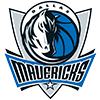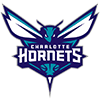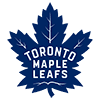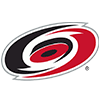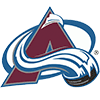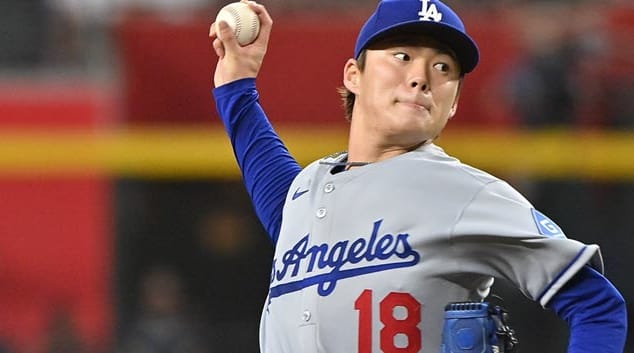Brad "Bogfella" Johnson here, filling in for Dave Regan who is enjoying spring training with the Dodgers this week. He will be back next week with more Mound Musings for the serious fantasy baseball fan. And speaking of serious baseball fans, be sure to check out my weekly column, Bogfella's Notebook, and throw me a follow on Twitter @bogfella. This season marks 23 years in fantasy baseball for me, and things have certainly changed since the old days. Let's get to it.
How Has Fantasy Baseball Player Analysis Changed?
Three things come to mind immediately:
There is so much more general analysis - some good, and some not so good - relative to far more players. In the early 1980s, there was a book, Who's Who in Baseball, that was the stat bible. It's still around. No analysis per say, but a plethora of basic numbers. That, and a handful of basic team profile magazines was pretty much all there was. Fantasy baseball was in its infancy.
Statistical depth of analysis was also very basic. No one had ever heard of BABIP or FIP or HR/FB. They didn't exist. A pitcher had a good or bad ERA. He had a lot or a few wins, and he struck out a lot of batters or not very many. That was it. And, you could easily get this information about seasoned veterans, but projecting the same for potential rookies was problematic to say the least. You had to work
Brad "Bogfella" Johnson here, filling in for Dave Regan who is enjoying spring training with the Dodgers this week. He will be back next week with more Mound Musings for the serious fantasy baseball fan. And speaking of serious baseball fans, be sure to check out my weekly column, Bogfella's Notebook, and throw me a follow on Twitter @bogfella. This season marks 23 years in fantasy baseball for me, and things have certainly changed since the old days. Let's get to it.
How Has Fantasy Baseball Player Analysis Changed?
Three things come to mind immediately:
There is so much more general analysis - some good, and some not so good - relative to far more players. In the early 1980s, there was a book, Who's Who in Baseball, that was the stat bible. It's still around. No analysis per say, but a plethora of basic numbers. That, and a handful of basic team profile magazines was pretty much all there was. Fantasy baseball was in its infancy.
Statistical depth of analysis was also very basic. No one had ever heard of BABIP or FIP or HR/FB. They didn't exist. A pitcher had a good or bad ERA. He had a lot or a few wins, and he struck out a lot of batters or not very many. That was it. And, you could easily get this information about seasoned veterans, but projecting the same for potential rookies was problematic to say the least. You had to work hard to find the up-and-coming stars.
Finally, actually seeing a player of interest was the supreme challenge. You could watch the game of the week on television. If you lived near a major league market you might catch a few of their games too. Cable coverage of every game? YouTube on the Internet? Nope. That might be the most significant change - today it can literally be "what you see is what you get" on pitchers both young and old. You just have to be able to evaluate what you see.
So How Have Those Changes Impacted the Fantasy Game?
Overall, the growth of fantasy baseball and the corresponding explosion of available information with the advent of the Internet have completely revamped the playing field. In most leagues, with fairly focused owners, there aren't many surprises. In fact, it's almost impossible for a player with any upside at all (and quite a few with little or none) to avoid fantasy follower scrutiny. Hundreds of publications and thousands of websites flood the playing field with analysis of every player from high school kids to retired veterans. Sorting them all out can be a daunting task.
That brings us to points two and three of the evolution. Take the incredibly useful (and occasionally very complex) explosion of statistical analysis we see today. Let me say here, I have served as a senior research analyst in the real world, so I have used in depth statistical analysis on a daily basis. With regard to fantasy baseball, I routinely use these emerging statistical formulas to help support or refute my own observations and expectations. There is no question they are a good tool to assign numeric values to otherwise subjective performance criteria. However, there is a downside to over-reliance on the statistical valuations.
That's where I would like to aim the focus in this article - the importance of combining statistical analysis with good, old-fashioned scouting to evaluate pitchers. Those numbers are great, but don't lose sight of the third point in the change cycle. The best analysis will almost always come down to "what you see is what you get" or maybe more accurately, "what you see today can tell you what you can expect to get tomorrow."
The Basic Numbers vs. Visual Observations Exercise
Let's start by evaluating the basic 2011 stats for four major league pitchers:
| WINS | SAVES | INN | HITS | WALKS | K | ERA | WHIP | |
| Pitcher A | 14 | 0 | 170.2 | 175 | 58 | 124 | 3.64 | 1.36 |
| Pitcher B | 16 | 0 | 165.1 | 163 | 57 | 98 | 3.71 | 1.33 |
| Pitcher C | 16 | 0 | 198 | 201 | 67 | 162 | 3.95 | 1.35 |
| Pitcher D | 10 | 0 | 154.3 | 137 | 28 | 100 | 3.38 | 1.07 |
There are no aces or real standouts in that group. In fact, they are all seemingly pretty similar in their 2011 performance. That was the intent. If confronted with the decision of which would be the best addition to your fantasy team's 2012 pitching staff, which would you choose? You could make an argument for any of the four. Unfortunately, I have seen an accelerating trend to commoditization in fantasy baseball drafting - quite simply, the use of stats and stats alone to select players. Some would say you don't even need to know his name, you just need the statistical "book" on his most recent performance. It's a disturbing path.
In our example, Pitchers B and C notched the most wins. Most would say chasing wins is a bad idea, so we will minimize the influence of that stat. Each appears to be stretched out enough to pitch a solid number of innings this year (none had any significant injury), but only one of our choices - Pitcher D - allowed appreciably fewer hits than innings, and because he also had a very low walk rate, he displays a much better WHIP and a somewhat better ERA than the other options. Finally, looking at strikeouts, Pitchers A and C posted the highest K/9 rates (6.54 and 7.36 respectively), but C also had the highest WHIP and the highest ERA. Depending on your perceived need in that category, he may or may not be an especially appealing choice. I'll add one more factor here - all but Pitcher A (who is 33) are 25 or 26 years old. That becomes a consideration because it can be argued that Pitcher A is a more known commodity, while the others are less established, and therefore somewhat more risky picks.
Have I made a compelling (or at least reasonable) argument for each? Are you ready to make your choice? Hopefully not. Without the names, you cannot really evaluate the potential contribution to your 2012 fantasy stats. The reason? Pitchers are human. They are not a static commodity. Some will improve in their next season, some dramatically, and some will regress, while some could eventually display front-of-the-rotation talent, and others will never be as good as they were in 2011. I will admit that luck (both good and bad) could have impacted the 2011 numbers of our four candidates, but I would argue that their underlying upside or ceiling will eventually determine their success or failure as a fantasy rotation option. You need to see that upside, or lack of it, to estimate ceiling, and make a good call on draft day.
So, now it is time for me to choose. While if forced to choose based just on the numbers I might have leaned toward Pitcher D, I'll take Pitcher C - and it is not remotely close. In fact, I have virtually no interest in any of the other three, though in a very deep or "only" league, Pitcher B could be a back of the rotation option. In a keeper or dynasty format, Pitcher C significantly lengthens his lead over the field.
Are you curious about their identities?
Pitcher A is little more than a 33-year-old journeyman. His 2011 numbers were assisted by a very favorable home park - he was awful on the road - and even though he will again have a good home park, his skill set has been on a general downslide for several years. In fact, 2011 was the first time he has posted an ERA below 4.00 since 2007. If he was your pick, welcome Aaron Harang to your mound corps.
Pitcher B was quite a surprise in 2011, notching 16 wins with a respectable 1.33 WHIP and a 3.71 ERA. While he has a fastball that can touch the upper 90s and a respectable slider, his offspeed pitches are average at best and that leads to a very weak swinging miss rate and low overall strikeout totals. Always a marginal prospect, he was exposed in the Rule 5 draft as recently as December 2008 (he was claimed but returned). He has the physical makeup to toss a lot of innings, but his repertoire could be likened to a poor man's Brad Penny. If he was your guy, say hello to Ivan Nova.
Pitcher D had to have some appeal. He clearly had the lowest WHIP and a better ERA than any of the other three candidates, but he also has a major Achilles' heel. He is still young enough, but his arsenal of pitches is generally far weaker than the others. His 2011 success was primarily attributable to a very deceptive overhand delivery, but during the second half, as hitters became more familiar with his motion, the wheels started to come off. He has a fifth-starter ceiling - that may be generous - and he could face challenges to his rotation spot very early in 2012. Josh Collmenter enjoyed a nice ride, but he is unlikely to be a productive fantasy option much further into his career.
So my choice, Pitcher C, had the highest WHIP, the highest ERA and his strikeout rate was good but not great. He did have a nice win total in 2011, but why was he my overwhelming choice? Ceiling. Like the others, I have seen him pitch several times. His stuff is electric, and it's still improving. He struggled with consistency in the first half, often following a good start with an implosion, but he made great strides in the second half. His overall stats mask four shutouts, and a K/9 rate that approached one per inning from July forward. I'll add Derek Holland to my staff, and be more than happy with it.
Knowing the names, does what you have seen influence what the numbers suggest you will get? Actually watch pitchers you are considering whenever possible. Knowing that can still be both difficult and time consuming for many fantasy owners, even in the Internet and cable age, find resources to follow who combine those wonderful stats with observation. You'll likely find that your team's position in the standings will move steadily up. Good luck in 2012!
Follow @bogfella on Twitter.















